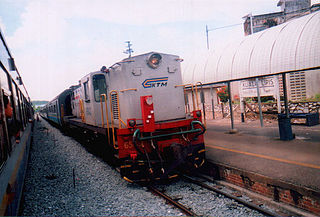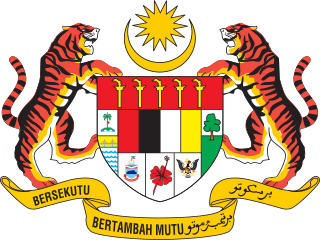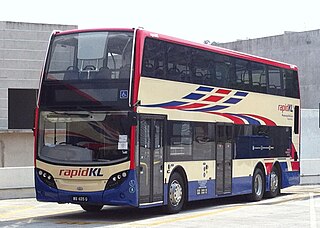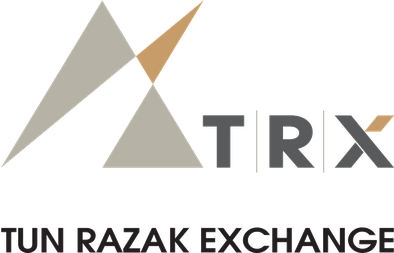
Kuala Lumpur Sentral (KL Sentral) or Sentral Kuala Lumpur is a transit-oriented development that houses the main railway station of Kuala Lumpur, the capital of Malaysia. Opened on 16 April 2001, KL Sentral replaced the old Kuala Lumpur railway station as the city's main intercity railway station. KL Sentral is the largest railway station in Malaysia. [1]
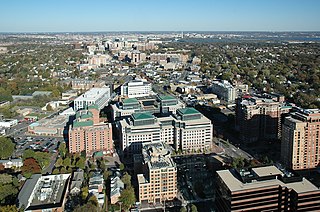
In urban planning, a transit-oriented development (TOD) is a type of urban development that maximizes the amount of residential, business and leisure space within walking distance of public transport. In doing so, TOD aims to increase public transport ridership by reducing the use of private cars and by promoting sustainable urban growth.
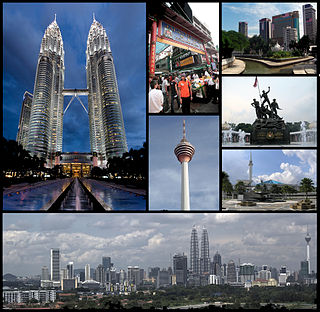
Kuala Lumpur, officially the Federal Territory of Kuala Lumpur or commonly known as KL, is the national capital and largest city in Malaysia. As the global city of Malaysia, it covers an area of 243 km2 (94 sq mi) and has an estimated population of 1.73 million as of 2016. Greater Kuala Lumpur, also known as the Klang Valley, is an urban agglomeration of 7.25 million people as of 2017. It is among the fastest growing metropolitan regions in Southeast Asia, in both population and economic development.
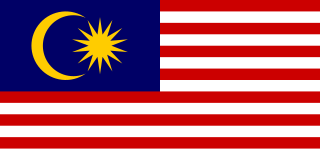
Malaysia is a country in Southeast Asia. The federal constitutional monarchy consists of 13 states and three federal territories, separated by the South China Sea into two similarly sized regions, Peninsular Malaysia and East Malaysia. Peninsular Malaysia shares a land and maritime border with Thailand and maritime borders with Singapore, Vietnam, and Indonesia. East Malaysia shares land and maritime borders with Brunei and Indonesia and a maritime border with the Philippines and Vietnam. Kuala Lumpur is the national capital and largest city while Putrajaya is the seat of federal government. With a population of over 30 million, Malaysia is the world's 44th most populous country. The southernmost point of continental Eurasia, Tanjung Piai, is in Malaysia. In the tropics, Malaysia is one of 17 megadiverse countries, with large numbers of endemic species.
Contents
- Overview
- History
- Development Zones
- Office zones
- Lot A: CIMB Headquarters (Menara CIMB)
- Lot M: Plaza Sentral
- Lot J: Sooka Sentral & 4 Office Towers
- Lot N: 1 Sentral Tower
- Others
- Entertainment zones
- Lot G: Nu Sentral
- Transportation zone
- Lot H: Stesen Sentral
- Hotels and residential zones
- Lot C: St Regis Hotel
- Lot D: 57-storey Residential Tower
- Lot I : Hilton KL & Le Méridien Hotels
- Lot K and L: Suasana Sentral and Suasana Sentral Loft
- Others 2
- Other developments
- KL Sentral monorail station
- Muzium Negara MRT station
- KL Sentral as a bus hub
- Bus Services
- See also
- References
- External links
KL Sentral is designed as an intermodal transport hub. All of Kuala Lumpur's passenger rail lines except the Ampang and Sri Petaling Lines serve KL Sentral, while many intercity trains serving Peninsular Malaysia start there. All the railway components of the scheme have been completed, and Nu Sentral shopping mall is located here. It was also designed to be a new business and financial hub for Kuala Lumpur.

The LRT Ampang Line and the LRT Sri Petaling Line are light rapid transit lines in Klang Valley, Malaysia. The combined network comprises 45.1 kilometres of track with 36 stations, and is the first to use the standard gauge track and semi-automated trains in Klang Valley.

Peninsular Malaysia, also known as Malaya or West Malaysia, is the part of Malaysia which lies on the Malay Peninsula and surrounding islands. Its area is 132,265 square kilometres (51,068 sq mi), which is nearly 40% of the total area of the country - or slightly bigger than England and South Korea. It shares a land border with Thailand in the north. To the south is the island of Singapore.

